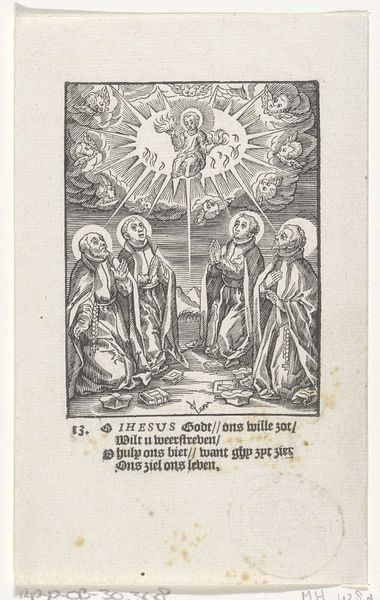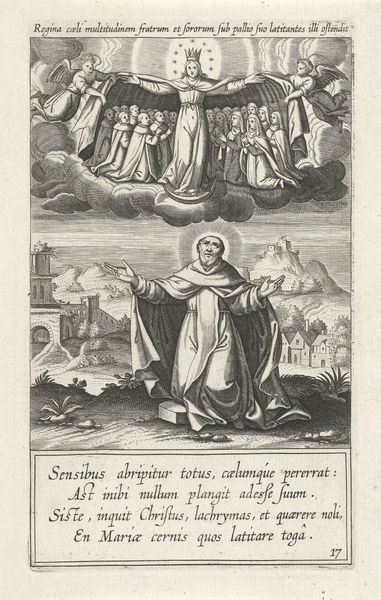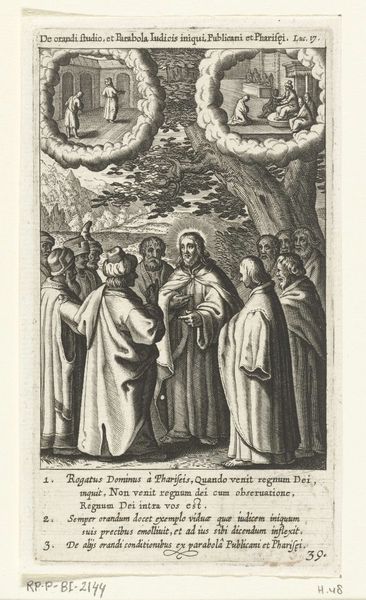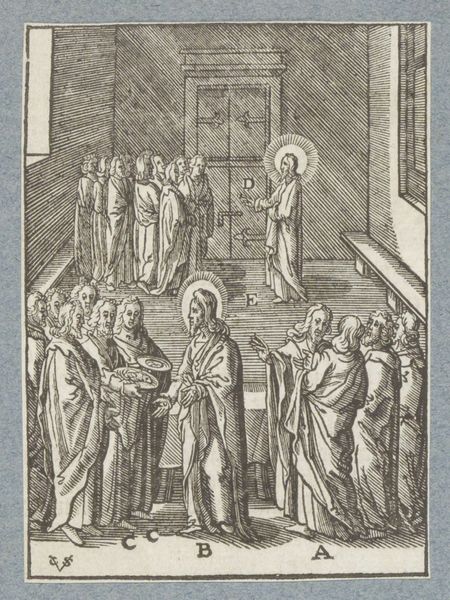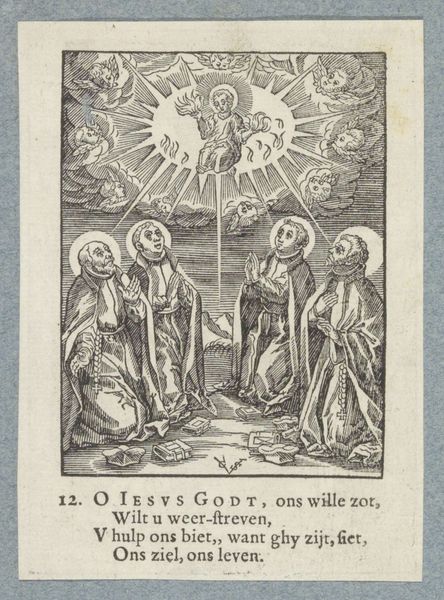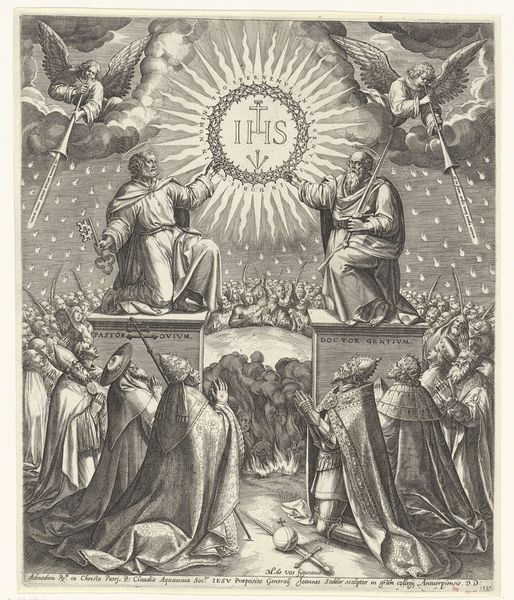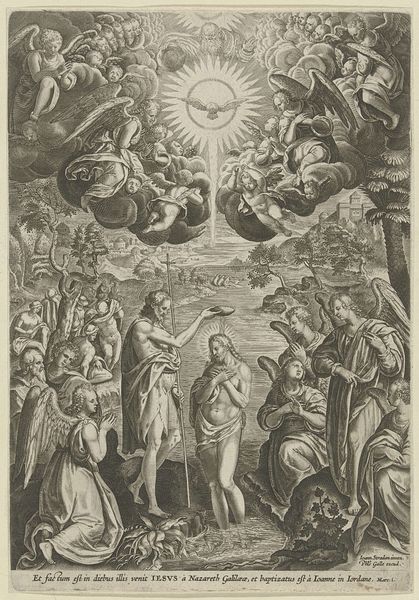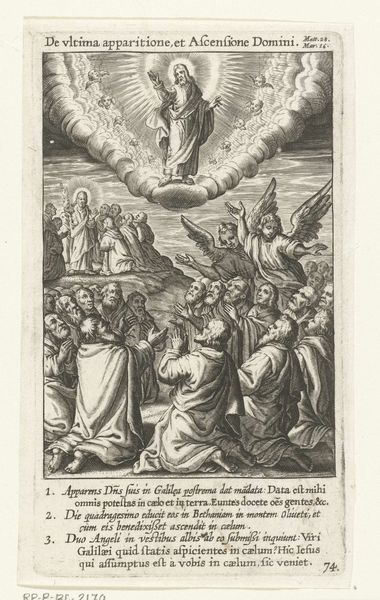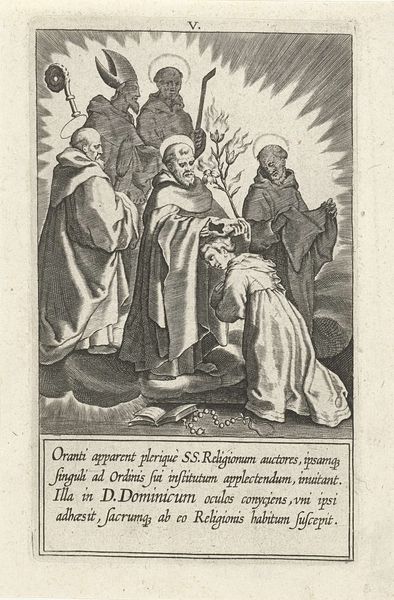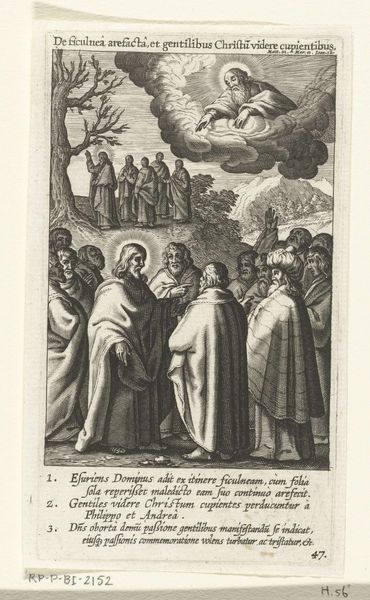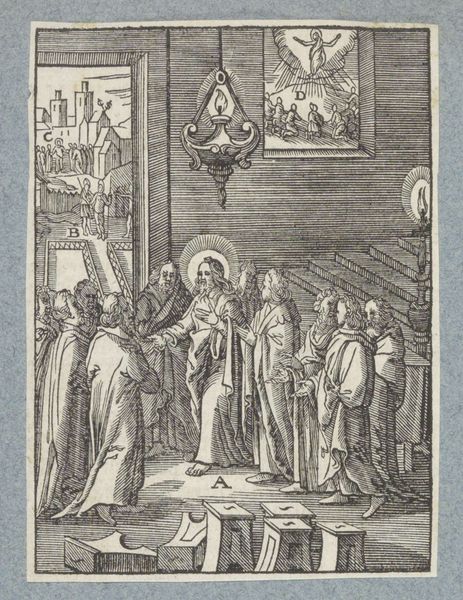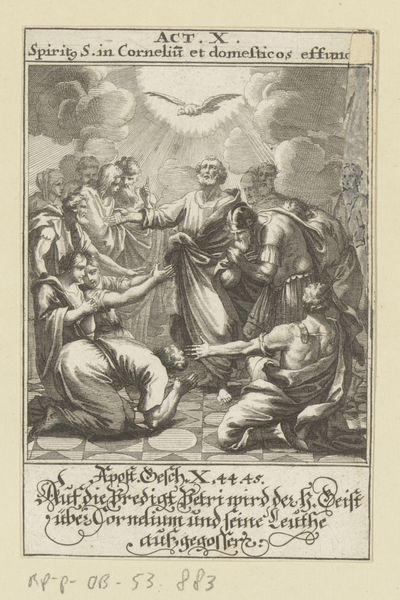
print, engraving
#
portrait
#
baroque
# print
#
figuration
#
engraving
Dimensions: height 99 mm, width 63 mm
Copyright: Rijks Museum: Open Domain
Curator: I find myself drawn to the contrasting textures in this print. There’s something immediate about its depiction of labor through material means. Editor: And, in fact, what you are responding to there speaks directly to the power this work embodies, especially given its context. We’re looking at “Vijf Heiligen” – “Five Saints” – by Michael Snijders, dating from after 1622. It’s an engraving, and it depicts, as the title suggests, five canonized individuals. Curator: Those dense clusters of lines give form to their robes. The artist really knew their craft. But who are these saints exactly, and why depict them as looking upwards at the dove above? Editor: Understanding that gaze is key. These are Saint Isidore, Ignatius of Loyola, Francis Xavier, Teresa of Avila, and Philip Neri. Their collective beatification by Gregory XV in 1622 united distinct historical moments across diverse geographical and ideological spheres within the universalizing project of the Catholic Church. Each figure faced particular historical exigencies which the church strategically wove into the fabric of its renewed self-image during the Counter-Reformation. Curator: Ah, yes, there’s something so staged and unnatural in how uniform their reverence appears; it makes one wonder about the conditions and context of their lives relative to the intentions here. Looking at it from a purely technical viewpoint, notice the variations in line thickness; what appears to be dark is no more than accumulations of tiny deliberate marks on a copper plate. It becomes incredibly subtle when observing the play of light. Editor: Exactly. The starkness lends an austere tone but reflects the broader societal tensions between artistic production and religious institutions following the Reformation. Furthermore, each saint comes with their unique symbolic baggage. Take Teresa, for example, her writing granted power by a male ecclesiastical body while also revealing possibilities within hagiography that provide glimpses into a woman's lived experiences in cloistered life. It is complex in terms of who can wield these narrative constructions to what purposes. Curator: So many of these choices reveal underlying aspects of art making! And ultimately a piece like this becomes a record of faith, devotion, and labor. I will remember the five figures facing skyward to greet whatever blessings might come. Editor: For me, it’s more a question of whose voices—and whose labors—become canonized over others through representational power; the print becomes another location to trace a specific vision of authority.
Comments
No comments
Be the first to comment and join the conversation on the ultimate creative platform.
